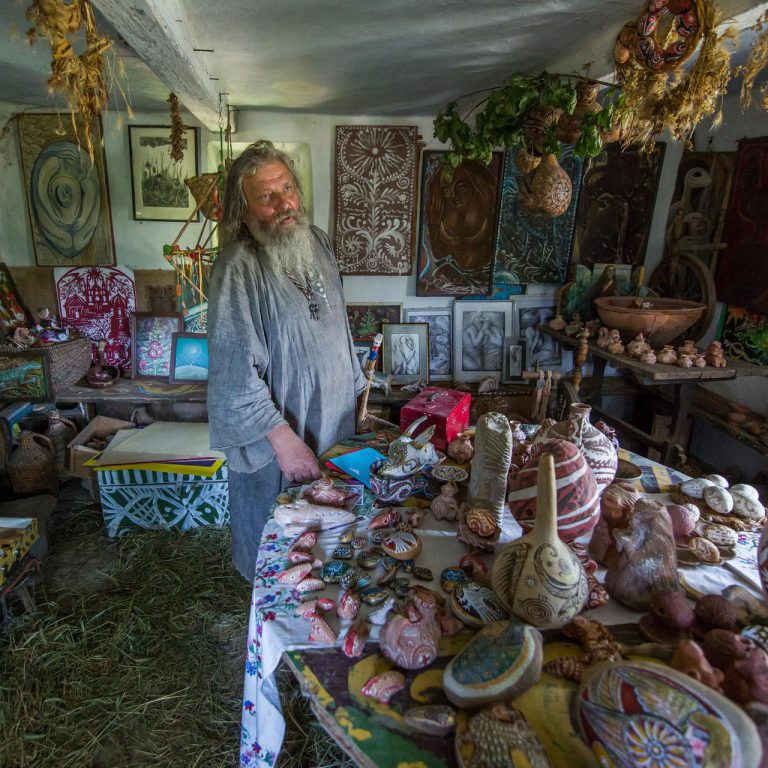The village Bukatynka in Podillia, despite of its great natural potential and ancient history, could be just another village that is gradually dying out. But more than 40 years ago, the young married couple of artists Oleksii and Liudmyla Alyoshkins settled here. Step by step, they turned the village into a museum and a place where people who are interested in history and art come for new impressions.
The Alyoshkin` life is a continuous creative endeavor, which they gladly share with anyone who wants, especially with children. They have their own philosophy, which is not understood by many residents of the village. Thus it attracts people to this place. Many people come to Bukatynka just to communicate with Alyoshkin, and while he’s barefoot, in linen clothes, and looks a little bit disheveled, he always meets new guests with a smile.
This is a story about the ability to see beauty in everything, about the growth in creativity and the ability to learn authenticity, to preserve and appreciate nature.
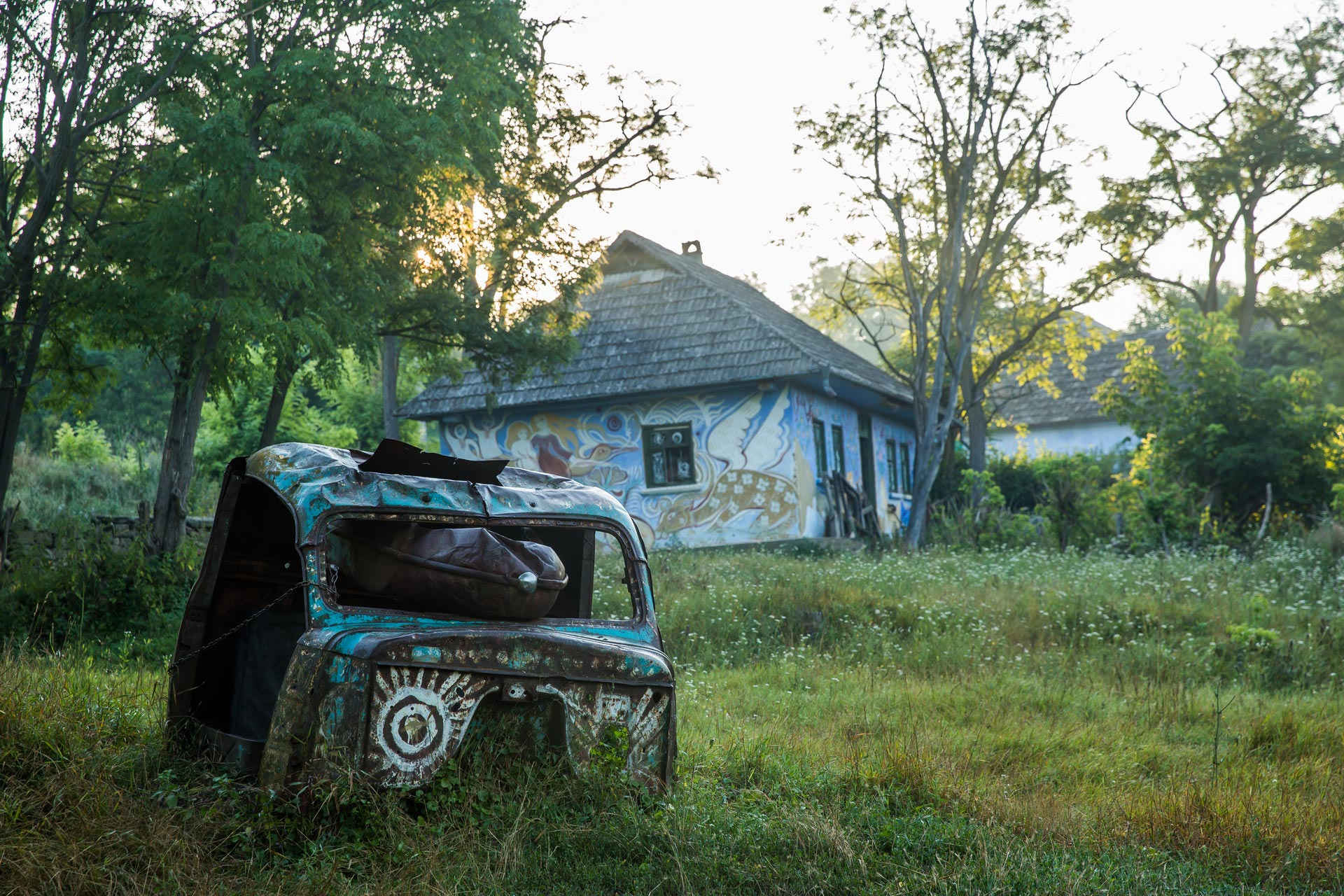
Bukatynka
Bukatynka stretches along the picturesque river Murafa among the Рodnistrovia hills. Buses come here rarely because It`s 30 km to district centers. It is home for more than 100 people, there is an elementary school, where the Alyoshkins teach. They are instructing children to live in harmony with the environment. Now there are only 17 students.
Bukatynka is famous for its unique landscapes – there are exits to the earth’s surface of stone remnants of layers of the planet-shaped period, ancient volcano eruptions, ancient oceans, seas, deserts.
Oleksii says:
— Here are numerous natural, architectural, cultural monuments of the Paleolithic, Mesolithic, Bug-Dniester, Trypillian cultures, the Neolithic, the Slavs, the Old Russian period, and the Cossacks` glory. The World Congress of Geologists was held here in 1985. Scientists from all over the world, from America, Australia, Africa, Asia, Europe, gathered to see a unique phenomenon – how the terrestrial crust of the surface of our planet was formed and to study the layers that were not displaced by catastrophes and cataclysms, as in others continents.
The village still retains the legend of the cossack-stonecutter Bakota, who as a child, was able to escape with his mother, hiding in an underground passage from the attack of the Turks and Tatars.
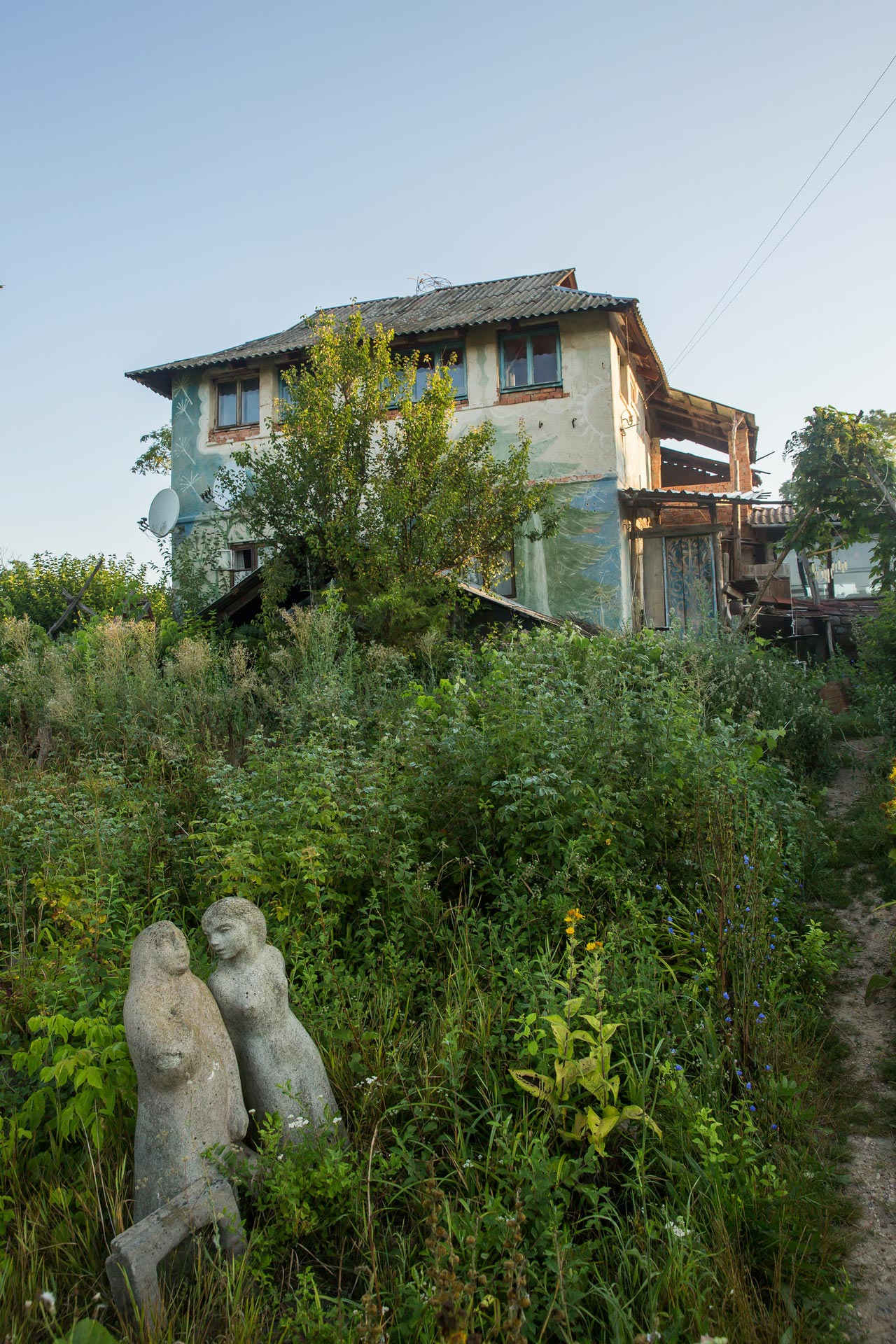
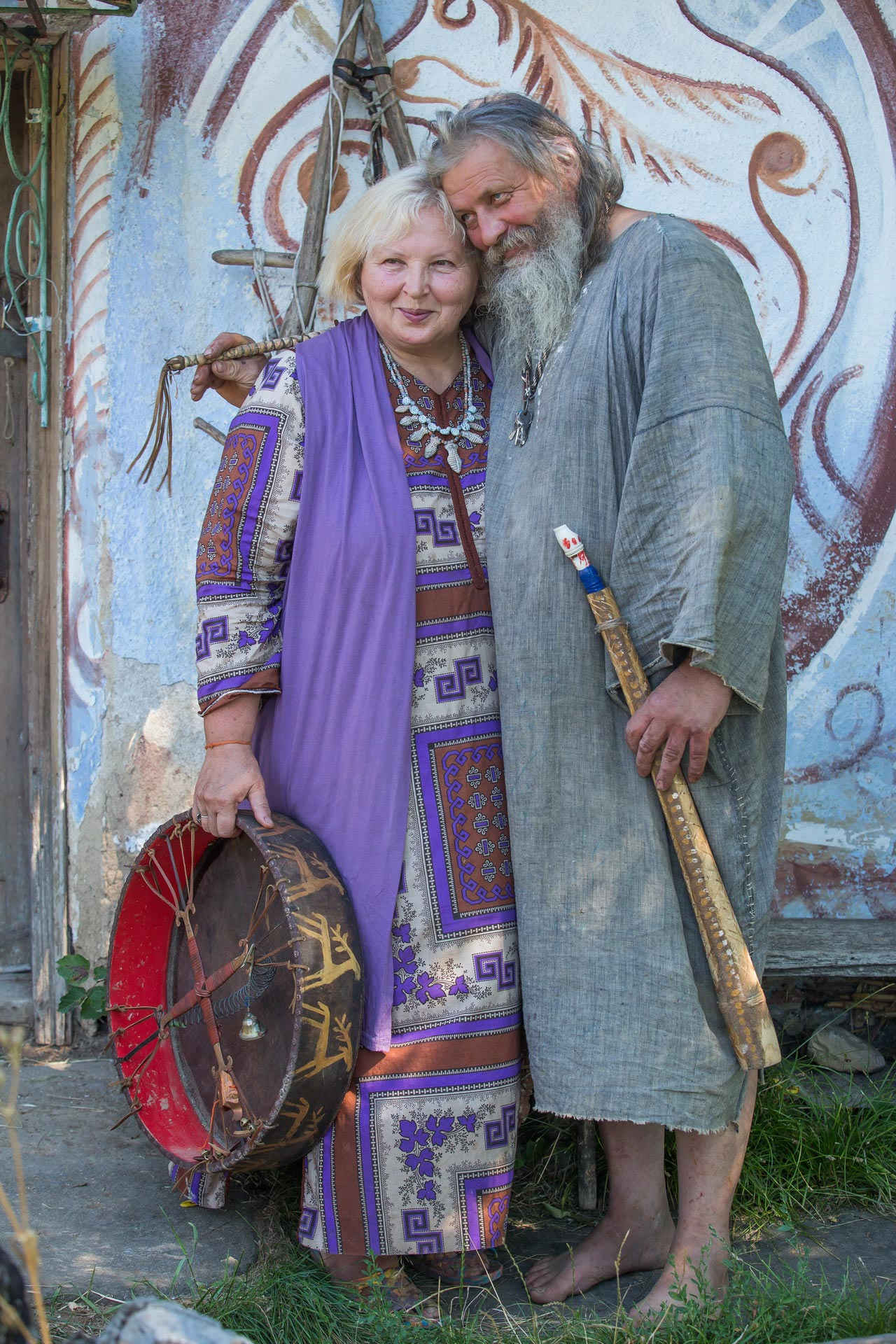
Once Bukatynka was one of the centers of stonecutting art. In 1916, according to the Alyoshkins, more than 300 people were engaged in this industry in Bukatynka. A catalog of stone products, which were taken to the surrounding villages, cities, Bessarabia, Volyn, to Kyiv and even to Vienna, was published. Basically, there were only the products needed in everyday life: sharpeners, millstones, drinkers for livestock, troughs, tables, pillars, crosses, tombstones, charmed monuments. In addition, they handle used stones to build houses. However, with the advent of scientific and technological progress, gradually collapsed.
Preservation of invaluable traditions and collecting items of this ancient industry and art, it’s became one of the reasons that the Alyoshkins` have chosen Bukatynka as their place of permanent residence.
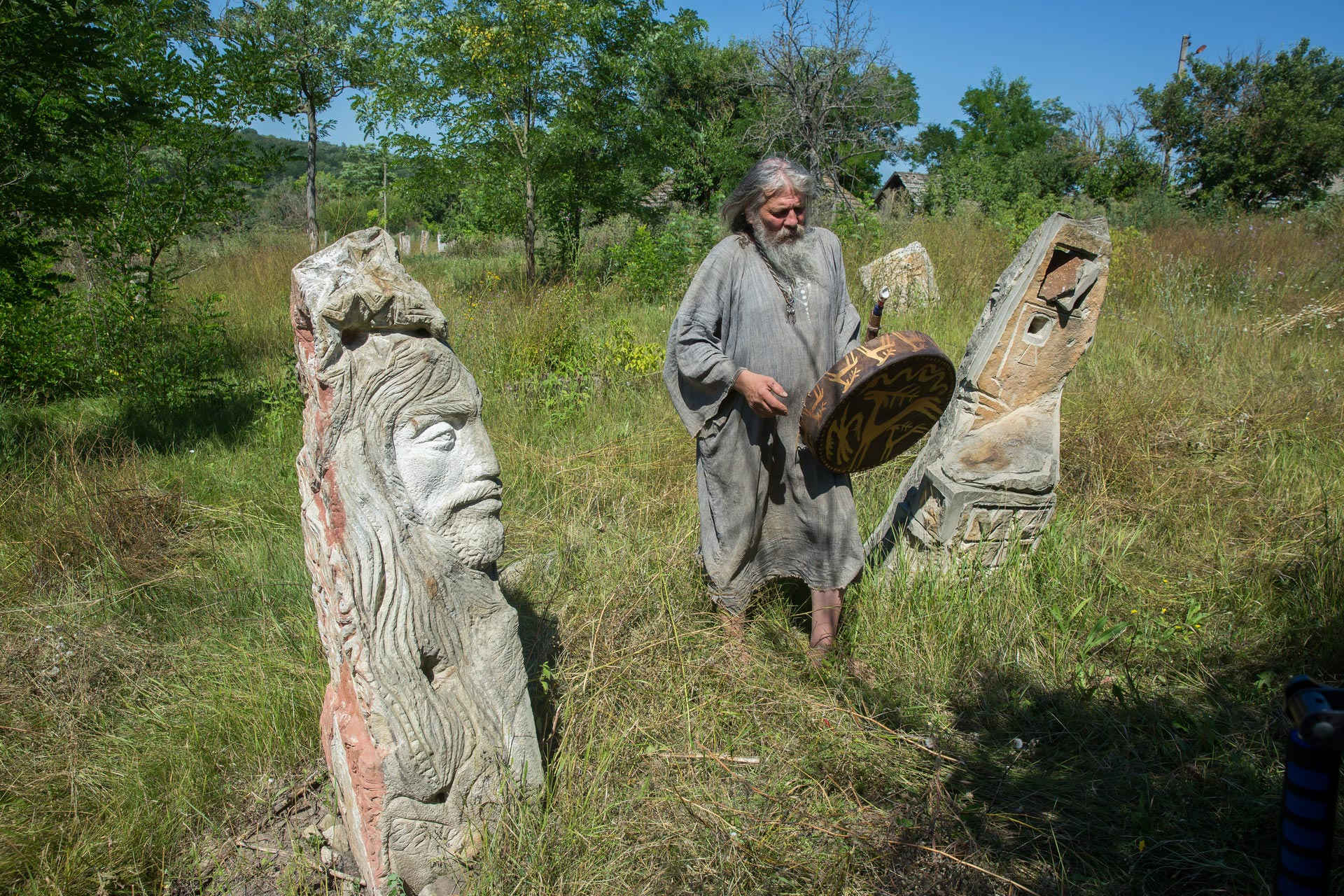
Moving from the capital
Liudmyla is from Minsk, Oleksii is from Kyiv. Young sculptors and painters could build a successful career in the city, live in an apartment with all conveniences and communicate with colleagues at the exhibitions and symposia. But they chose a completely different life – closer to nature, in a village that Liudmyla calls native. Her father, grandmother, great-grandmother come exactly from here. Liudmyla spent her summer holidays here in her childhood.
Oleksii studied at the Kyiv State Art Institute at the Faculty of Art and Restoration at the Department of Sculpture, and Liudmyla graduated from the Belarusian State Theater and Art Institute of Decorative and Applied Arts. She went to practice in a porcelain factory in Korosten. She met Oleksii there:
— She is bald-headed, in such pants, and the vodka didn’t take down. I’m telling you, she’s a strange girl. The girl gives her poems to read, draws swans: one is flying, another is sitting there on the pond and waiting. And then she says: “Listen, there are stonecutters, there is no national sculpture, only Greece, only Michelangelo”. And we are searching and searching. It can not be the truth. It really does not have any roots of the national sculpture, does it? Well, it was seventy-eighth year…
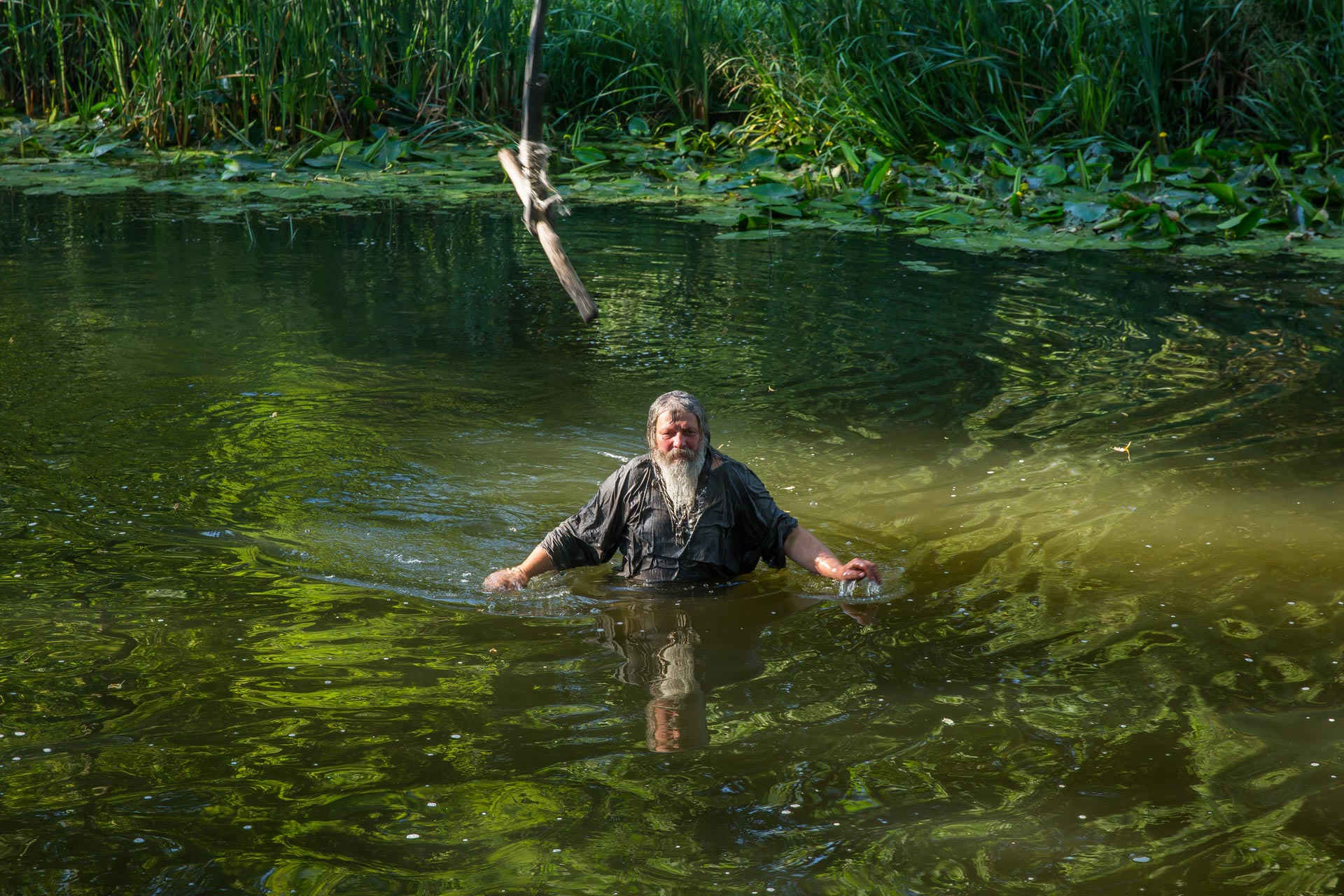
But the young spouse did not move to the village immediately. Only when they lived in Minsk for certain time, both realized that they want to create and live closer to nature. They did not go to Bukatynka for comfortable conditions and did not get them over time, but they got something much more — their own philosophy and thousands of grateful people who have been visiting Bukatynka for over 40 years and talking to Alyoshkins, staying their thoughts and discovering new places for themselves:
— Here are the bungee, the river, the air. And we left Kyiv and Minsk for this. The main thing is nature, but not that we built there.
At first, the spouse lived in a mudhut, because all the huts in the village were occupied, and later their parents helped to build a duplex building for them. Here were born five children, who also chose a creative way of life.
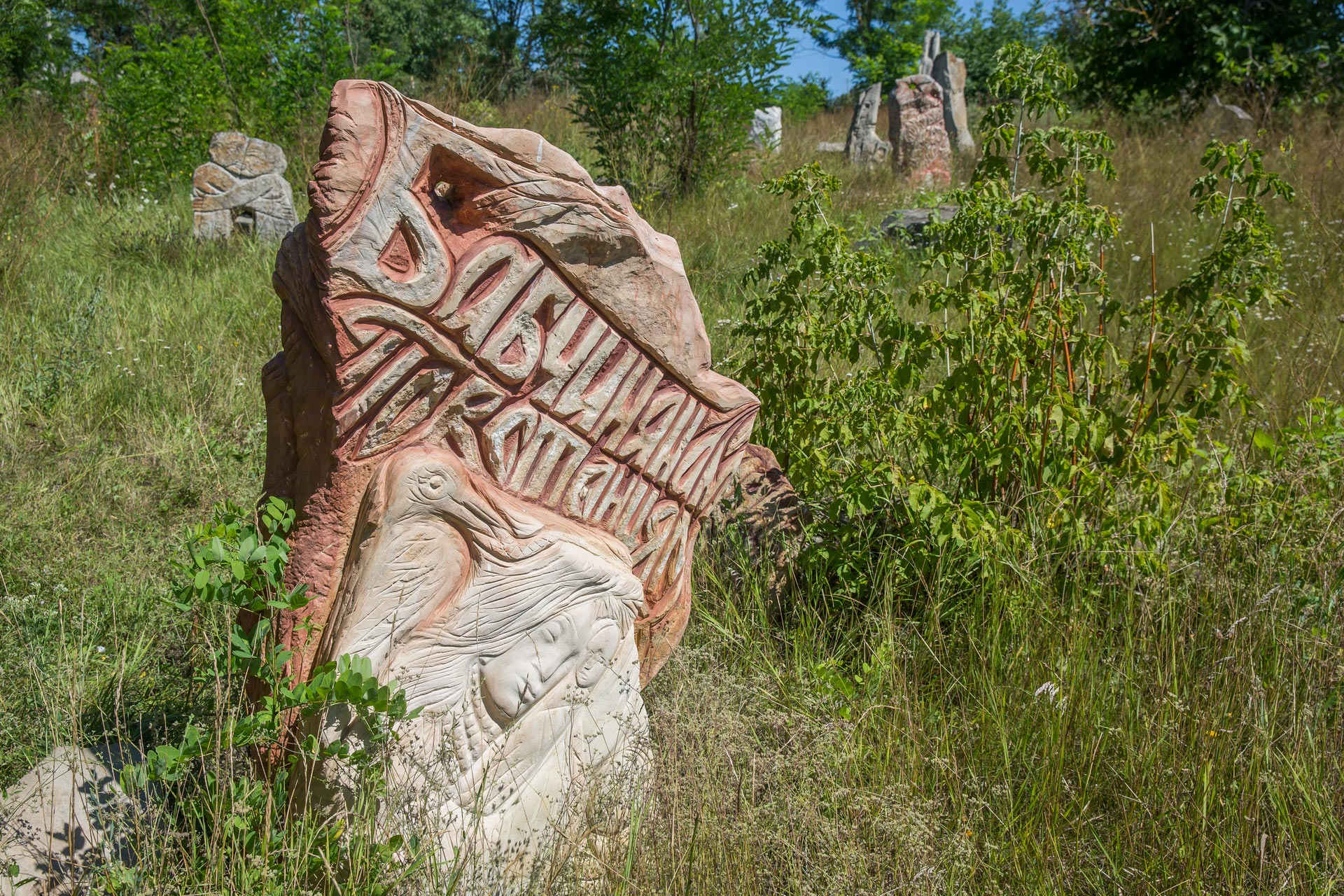
The art of sand
The Alyoshkin family has transformed Bukatynka into a true open-air gallery. Their sculptures can be seen everywhere — they are all different and each one has his own appeal. In general, there are more than 150 of their works in Ukraine.
Oleksii tells us, that here has place the great influence on the creativity and the conditions in which you have the opportunity to create, so Bukatynka is perfect for this. There are rocks, a lot of sandstone, forests and the river. The place is not inhabited by people and hides an ancient history.
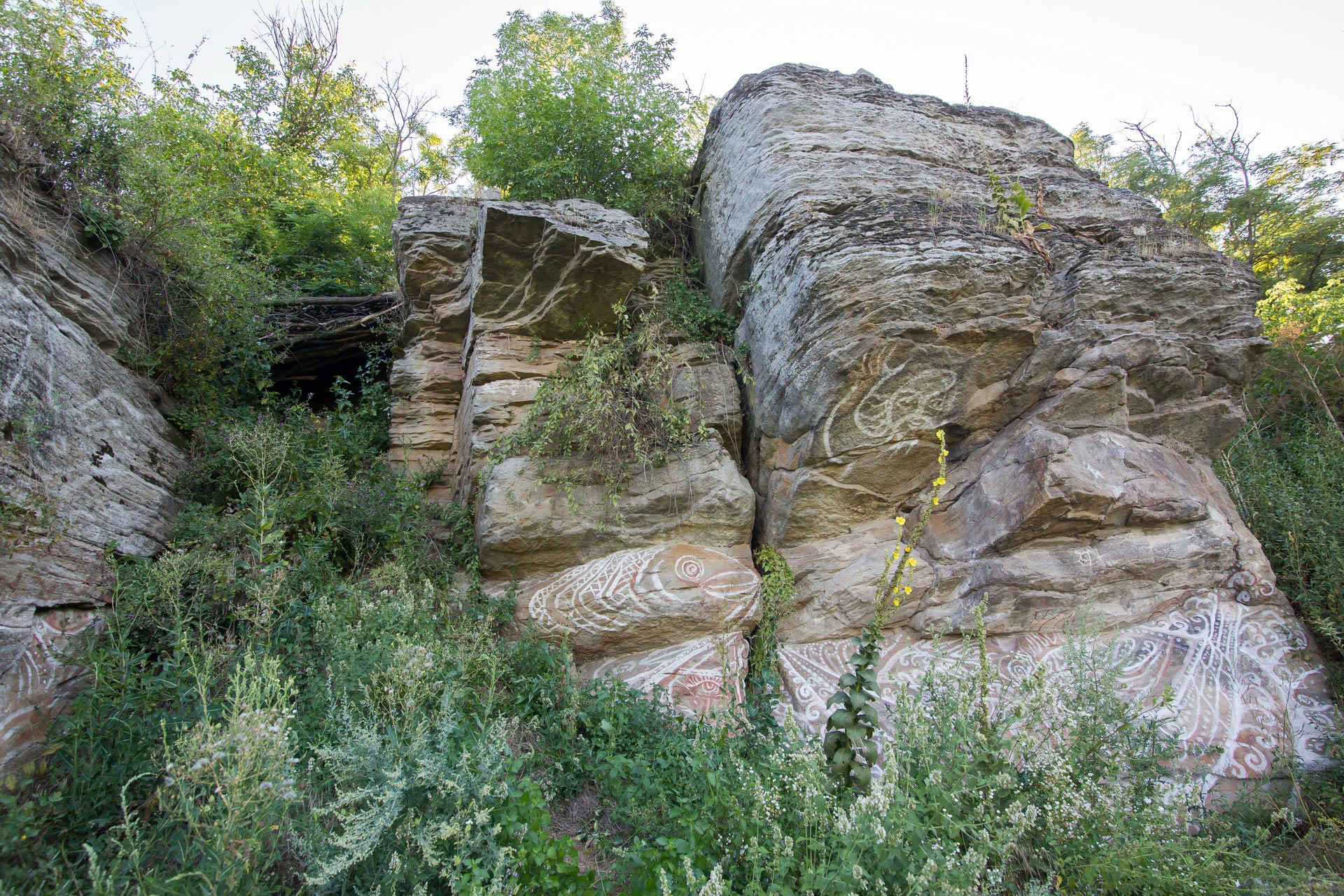
The landscape of Bukatynka is a finished work of art created for years. Natural objects are often one of the components of Alyoshkins` sculptures:
— Many years ago it was a desert, with the sand of the Aeolian pillars the wind made these sculptures. He just blew, a sandstone hit and those rocks weathered.
According to Oleksii, on the territory of Bukatynka there was a Bug-Dniester culture of settlements, soon — Trypillian and Chernyakhivska. People still find artifacts, sometimes just on the surface of the earth. Skulls, bones, pots and remnants of dishes- all this becomes part of the Alyoshkins` art, which gets new sense:
— The sun rises and sets there. And this motion of the sun was observed by the first settlers in these places, the oldest settlements of Bug-Dniester culture, nine thousand years ago. They enshrined all frescos, shards. Everything is primitive, but this is our history. We walk on their shards, on their graves, therefore we look attentively at everything.
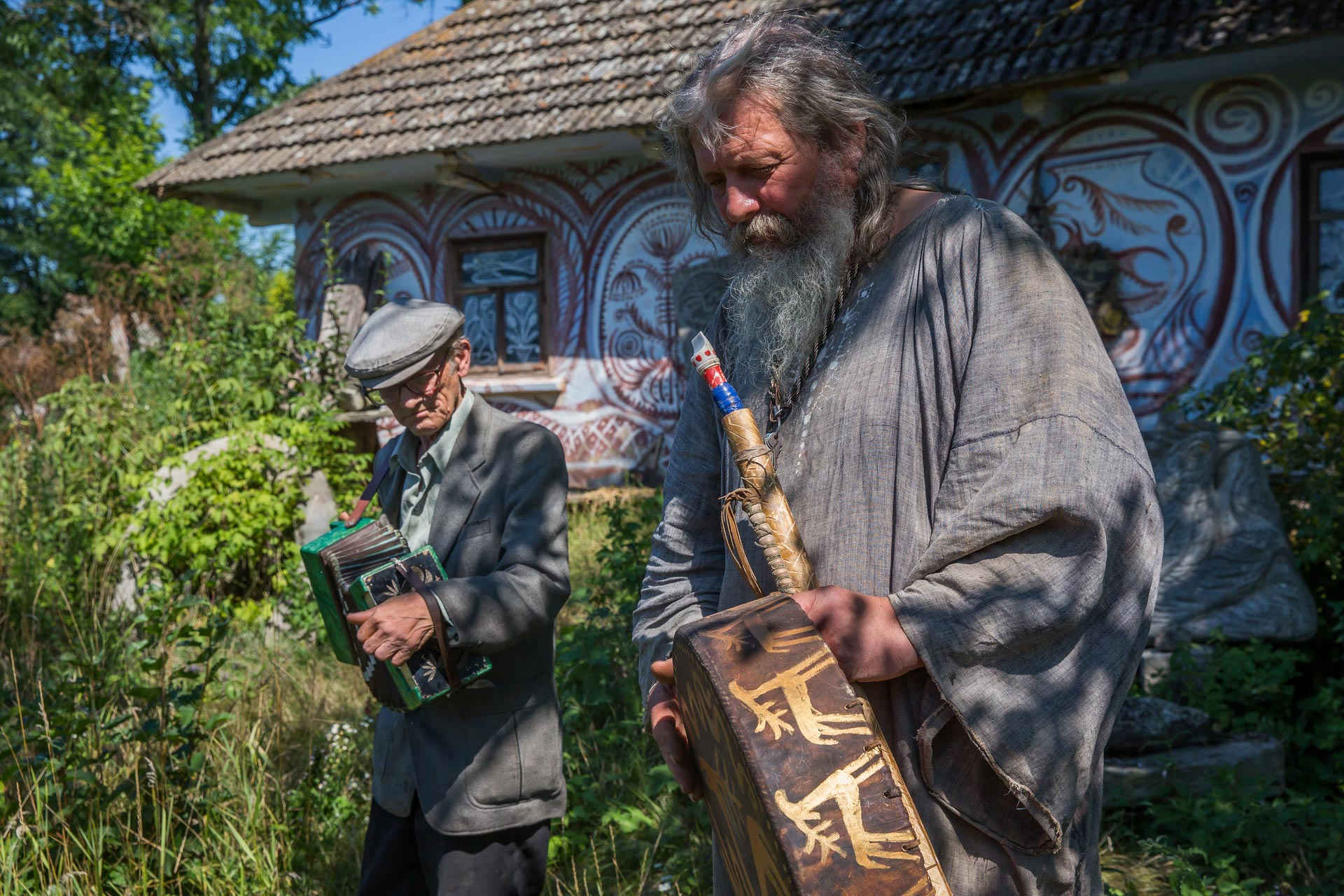
Oleksii says that there are a lot of wonderful places in Ukraine where you can feel the different energies of ancient millennia and millions of years. He considers that you only have to desire it, feel and be focused on this wave where peace, wisdom and confidence come:
— We learn from the nature, and it is also a great sculptor; to understand the harmony of natural erosion — is a natural sculptor, a natural sculpture. There is such a relief titled “Kiss”. It was such a surprise when I found it. This is a discovery to find it and then people asked: “How could the God make such a thing?”. Exactly, not human. Man did not make any contribution, neither hands nor thoughts.
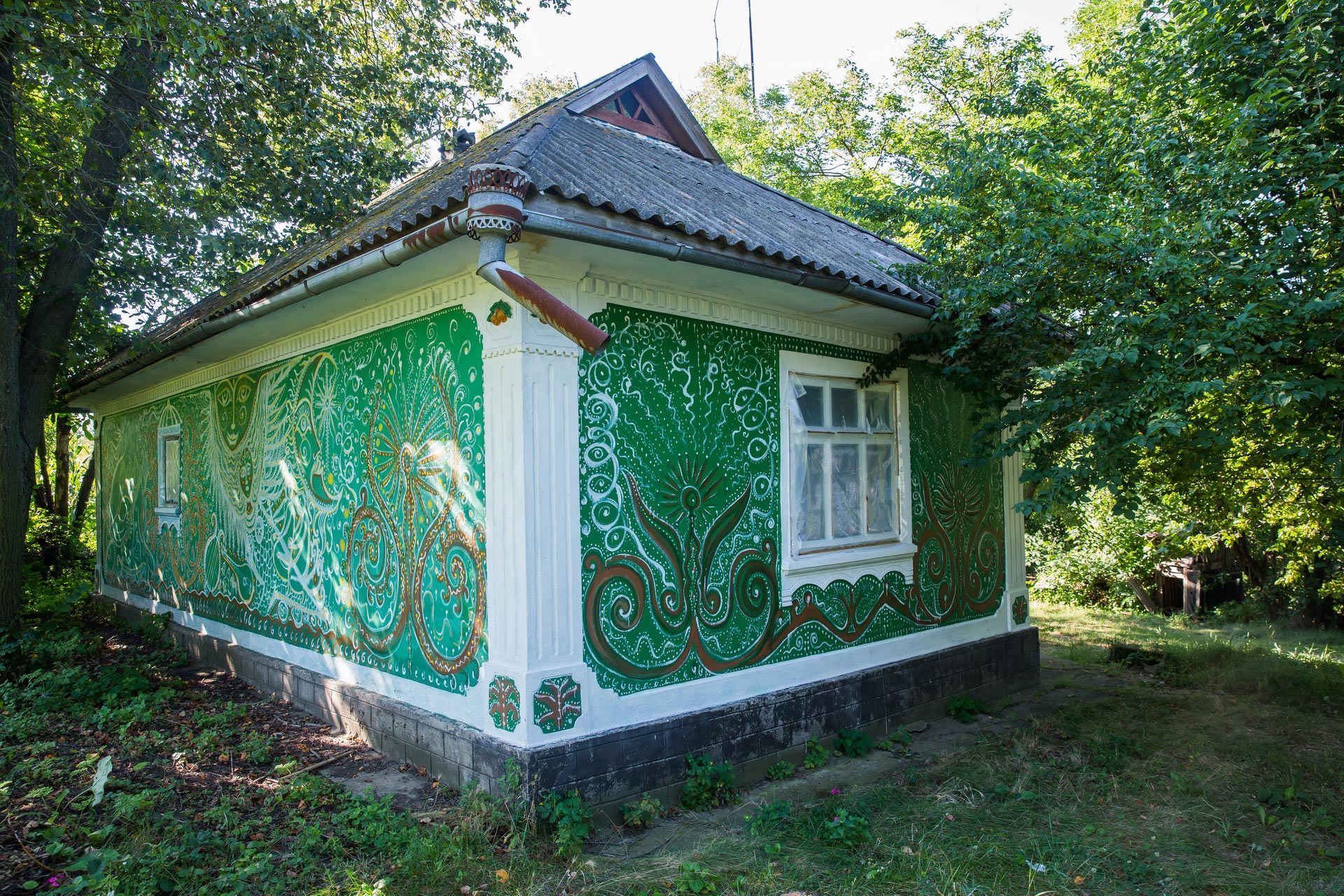
Huts-museums
When neighbors were selling old huts that remained without owners, Alyoshkins bought them and turned into museums. There is a hut where theater of shadows is placed and people paint with the sand on the glass. There is a museum of pottery with hundreds of jugs, barrels and qumans, gathered in campaigns in Transnistria, a museum of antiquities with a decorated furnace. There is a hut with the works of their family: stone, wood, cutworks, clay, colored Easter eggs, painting, graphics. They are all covered with hay inside and painted with fabulous mermaids, Trypillyan circles, Podilsky pots outside.
The entrance is free for everyone, and the name “museum” is conventional. However, here you can touch everything, play, and also help to create each of the museums. Alyoshkin says that he does not know if it’s worth to design them as museums, because then much can change. He admits that after several stories on television there were people who wanted to buy these huts. However, the place remains valuable because it`s created by all these people.
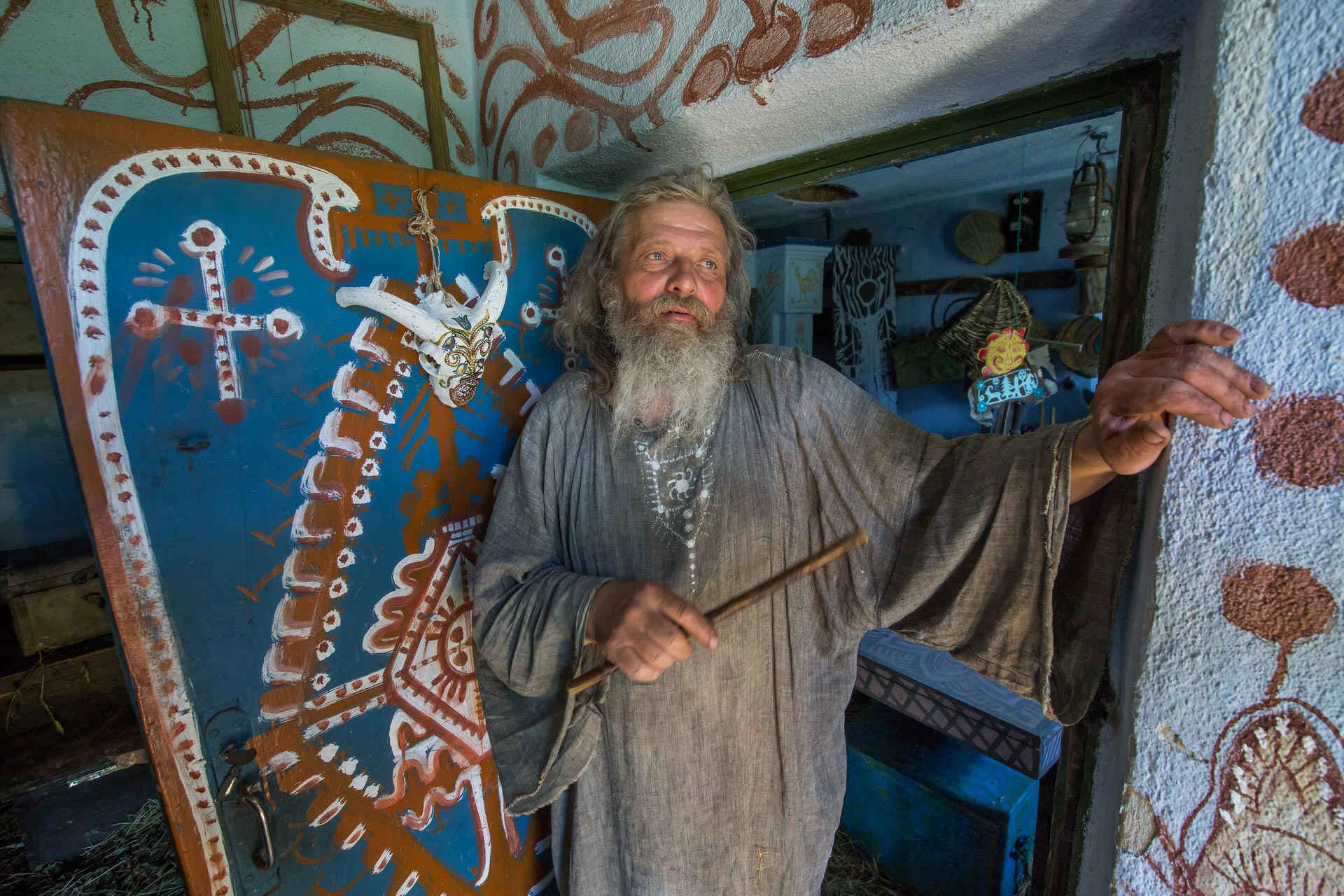
Oleksii says that it is important to create conditions for children’s creativity. So in one of the huts children can learn how to draw with sand, and the younger they are — the freer they feel in creativity.
— If a backpack, a tent, a glass for painting with sand appear in each house, it is clear that those children will draw, invent, and fantasize.
In one of the museums most of the works are the child’s creations. Oleksii laughs and says that the children who come to them often choose toys and products created by the children:
— We are such artists, we have finished institutes, everything, but children choose folk, children’s toys. They are not made like that. Recently there was a year and two months child, who went to work and kiss it. How the child knows that she need to kiss the work and which one. We, people, were standing there, well, we’re shocked. What they do intuitively is what it prompts inside.
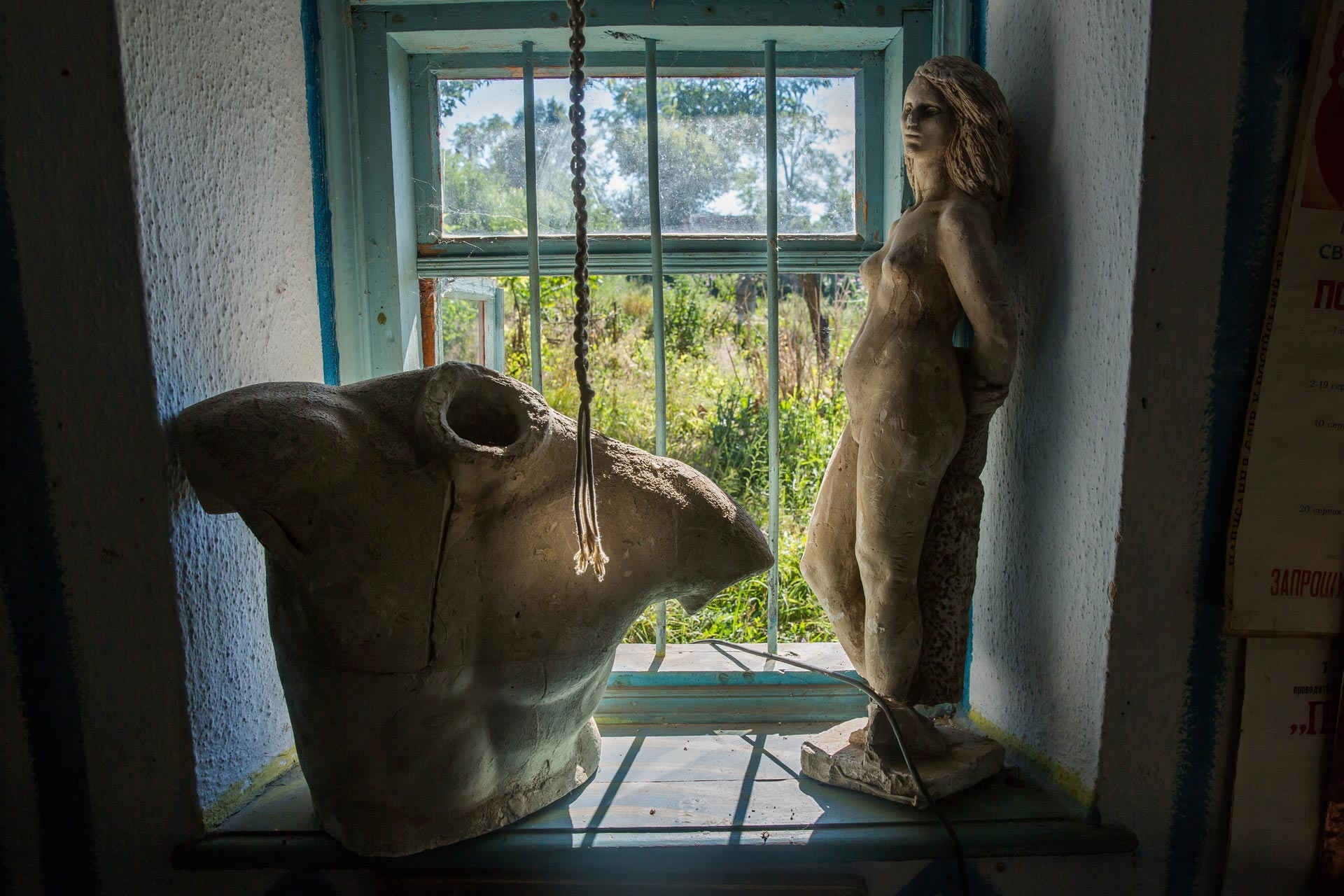
In the room with toys, exhibits are collected from different times: from Barbie and Ninja Turtles to antique gypsum and clay toys. Alyoshkins found a lot of things just in the garden. In Oleksii`s opinion, toys influence on how the child is growing. Children of the spouse played mainly with natural toys, which also influenced on the development of their imagination:
— There was no plastic there, the pistols were not like natural ones. You need to have the imagination to know what is it like. You find something and I imagine it. Somehow, it does not look like that. But for child it`s alike. They say: “No, there is some kind of dinosaur or something else”. So we are inspired by the toy. And now there are not these paintors, who made whistles then. Because always in the fairs, on Pantheleimon, whistles were sold. And the children had where to buy and something to play with. So, where are they? And there are not those masters, so it is disappearing. The one that begins is already refined. All these toys are refined. And here, in such an environment, even the toys are completely other. And in the city on the ninth-twelfth floor — absolutely another toy. It was such, such, such. And in order to do such toys, it is necessary to live on these lands, in the village among the nature.
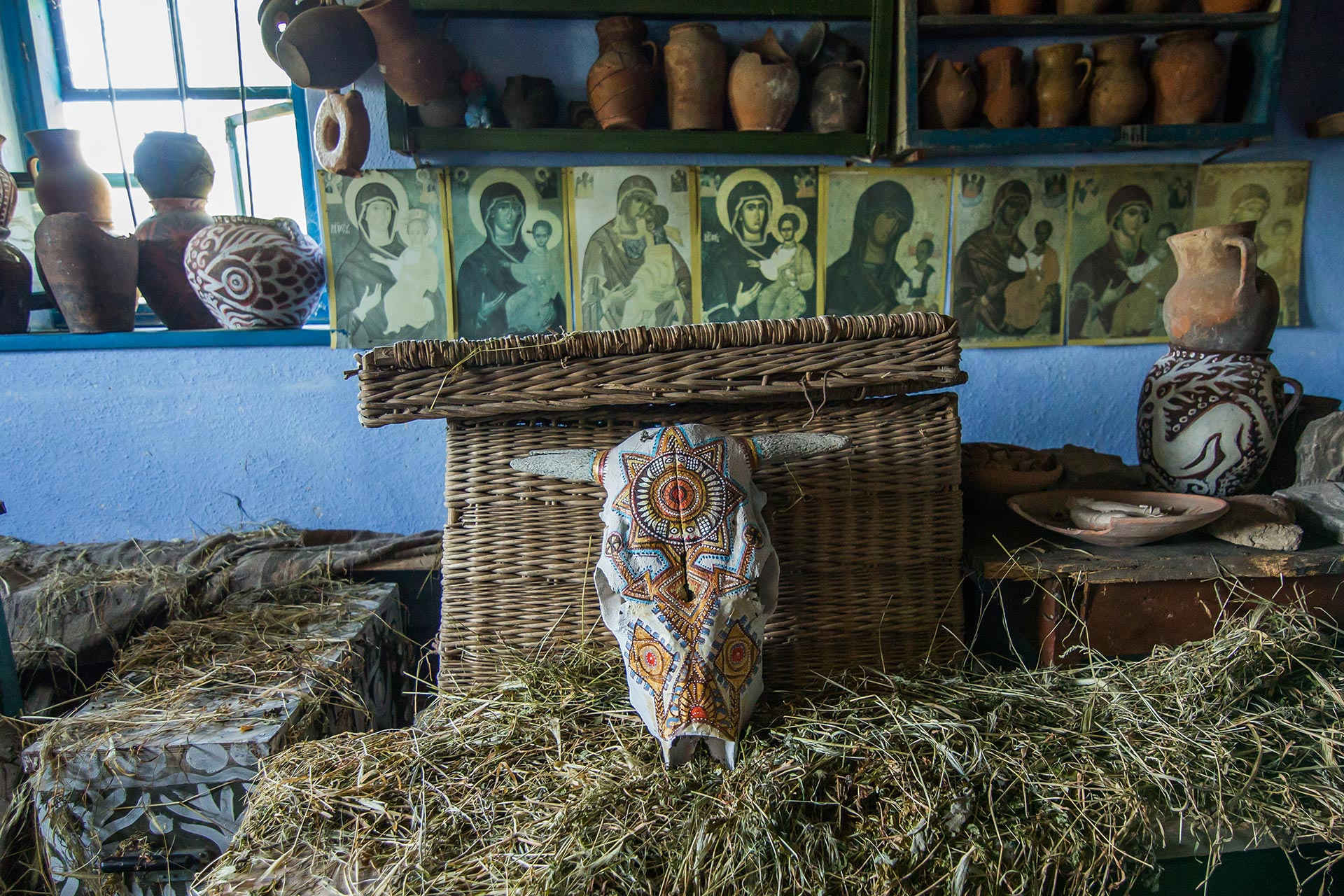
It`s very difficult to concentrate on one thing in the museums of Alyoshkins — What there are many small details that are amazing, impressive and even fun. It is very common to see the painted skull. Every element, part of a pot or bone which is found in sand are important for Alyoshkins. They admit that everything that surrounds us can be painted and they tell why skulls are not scary:
— The skull of horse or cow was a talisman, and it was placed in the corners of the building. A friend, a true companion horse passed away — you can paint on it and transform inanimate in alive. This is not just a fear of the skull, but already painted. Well, there are the peoples that paint both animal skulls and human skulls. They rejoiced when the person passed away. An honest man lived and died a hero’s death for a tribe, for a village there. There is no reason to cry, to mourn – just to rejoice. And that`s why they treated the skulls in a completely different way – with joy. But for us it is some horror, fear and so on.
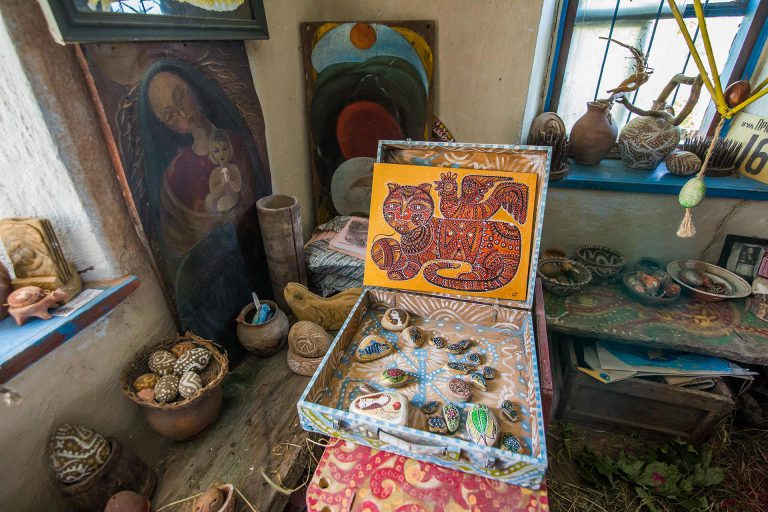
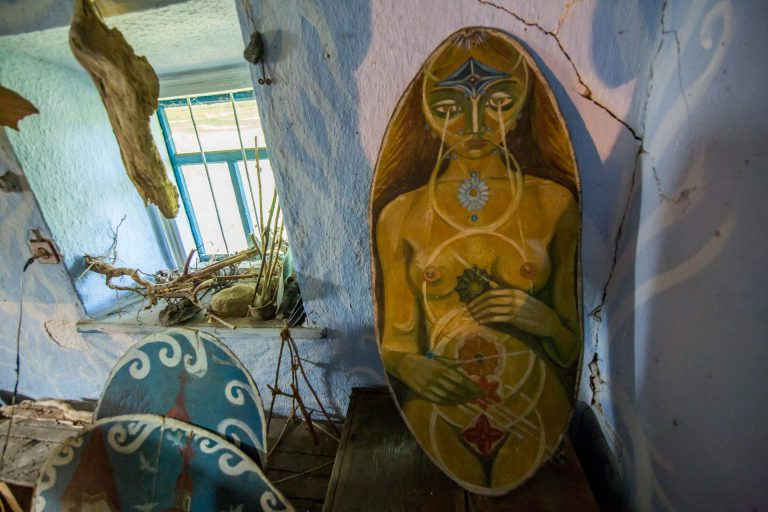
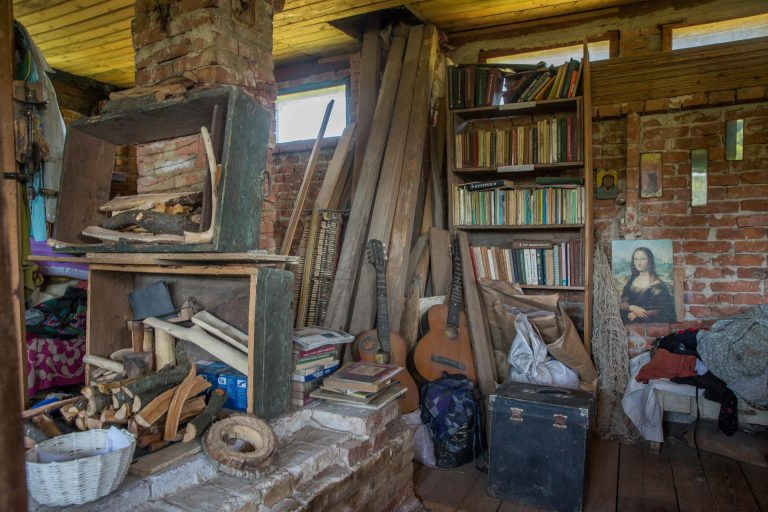
slideshow
And they really paint everything – from clay, stone or wood to ordinary pebbles or snail shells:
— You can decorate even such abandoned snails` houses, make art. That is to add something inanimate there and make it alive.
However, Oleksii says that art has become more decorative and ornamented now, but previously it was sacred:
— Each sign — a cross or the Perun fleeces – had its meaning and were pronounced as a prayer. And then it has already turned into an ornament. We do not know what each sign means. And the value was sacred then — they were painted so that people would not see it; the crosses were worn so that they couldn’t be seen; therefore your name is unknown and you are protecting yourself.
At first locals negatively received the “entertainment” of the Alyoshkins, but when they realized that they did it mainly for children and their activities do not harm anyone, but make the village more attractive — they calmed down.
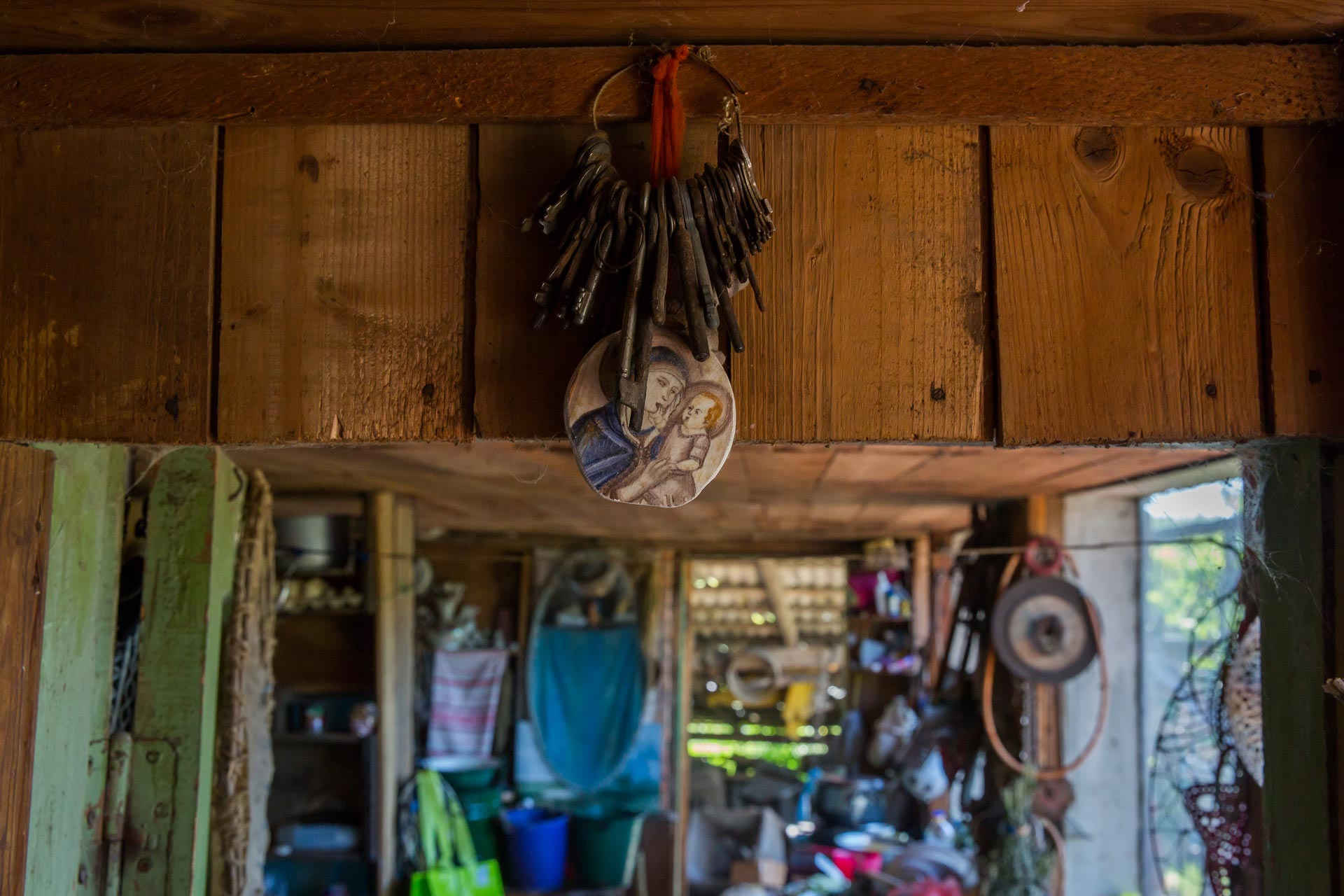
Children like an art
Alyoshkins devoted most of their life to teaching children at schools. They had been walking 4 km through the field to school of the neighboring village Vila Yaruzki for 10 years, and also taught in Bandashivka.
The school in Bukatynka was opened only in 1993. They taught a drawing, graphic, history there and at the same time told children the Bukatynka`s legends, taught how to make rag dolls, painted Easter eggs, sculpt from clay, carve cutworks. Oleksii taught history, law and physical education at a local school and Lyudmila conducted a circle of handicrafts and taught pupils to draw and work. The school in Bukatynka was closed because of the lack the necessary number of pupils. And now the children go to school to the neighboring village:
— What is a school? This is not euro-class windows, it’s not a computer class, it’s not toilets. But what? This is teachers who carry that spiritual energy. Why were people without euro-class windows and computers growing up honest, respectable patriots? And these achievements, euro-class windows and computers — they will not make a person more worthy. They will not do it.
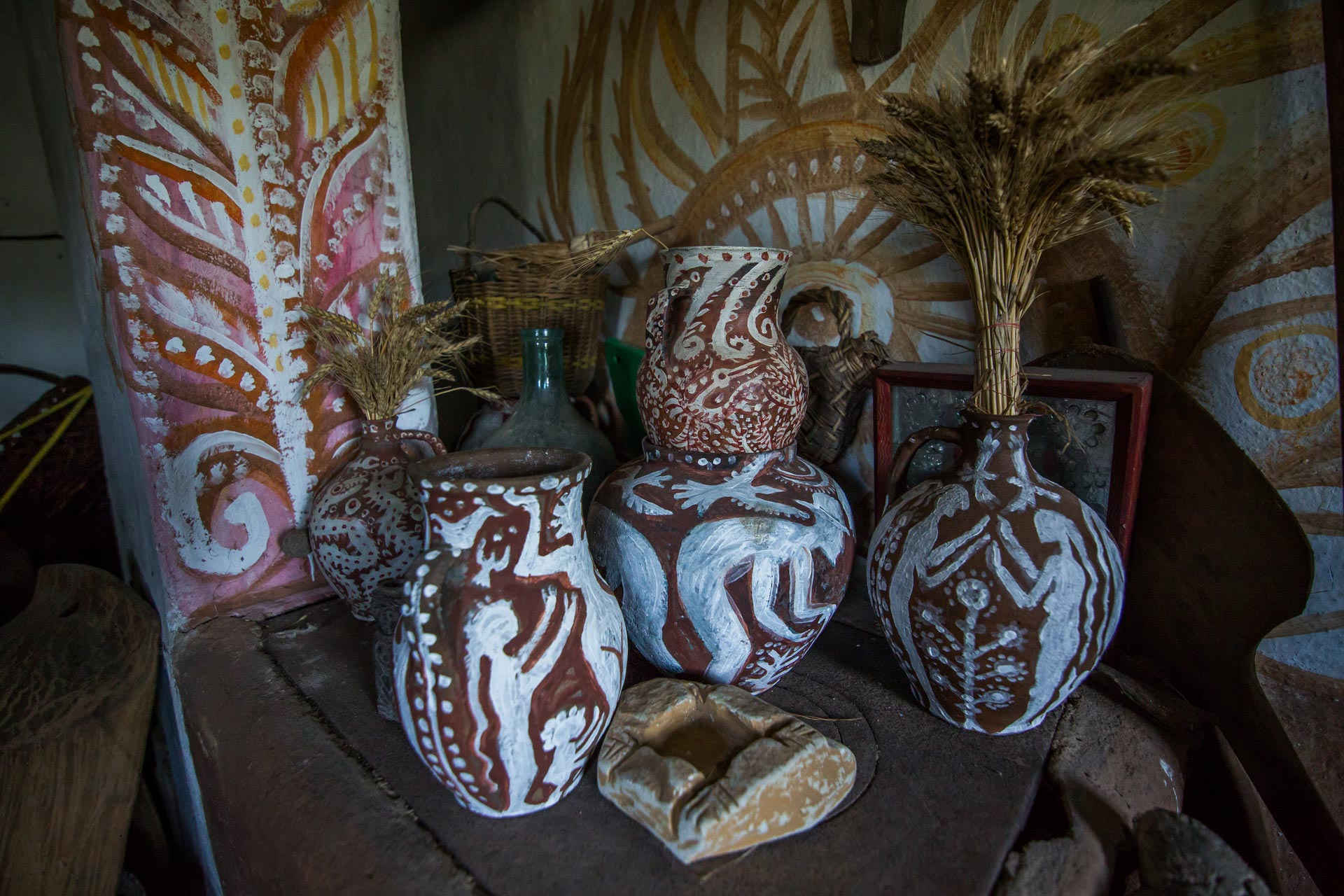
Alyoshkins also gave their own children a lot of freedom in creative work since their childhood. They watched the shadow of their father, left traces on the sand. So they could imagine a lot. Art was not imposed on them, were not forced to create, but simply made favorable conditions for development, freedom and a sense of the nature:
— Well, who does pour out the sand at home? But we were well out of home on the sand. We were playing and sleeping there, that`s all. We create, because creativity gives us such enthusiasm, such energy. Who plays music, understands me. When a person creates — it`s a huge burst of energy. And you do not need anything else.
According to the artist, the material part is not an important role for creativity, but silence and tranquility, which is amply in Bukatynka:
— Don`t interrupt those writer or poet, or musician, because you need to wait while a melody plays, and you discontinue me, and this melody won`t born because of it.
Oleksii has seen the art since his childhood. His grandfather sculpted from clay. Oleksii tells that he saw when grandfather was modeling a brick-kiln, but molded a cow. Alyoshkin’s uncle was a sculptor and worked with stones. He says that such observation of art always affects the child, therefore the continuation of the dynasty is often followed by artists, circus performers, actors:
— It is necessary to create such conditions to make the person awake there. The most important thing – to alight and they will burn, went, went. Not just “to pour into” the knowledge. Because it is perhaps necessary to tell this in the trek, close to the campfire. Then, in completely another survival conditions and thinking about water, warmth and everything, person will remember something and something will come by itself. Oh, he says, I remember camping. Because when most of the children come, they say: “ We were in the hike and I became a human there. I did not think only about myself, but also about someone, to feed, to get, to lay over, to cover…”
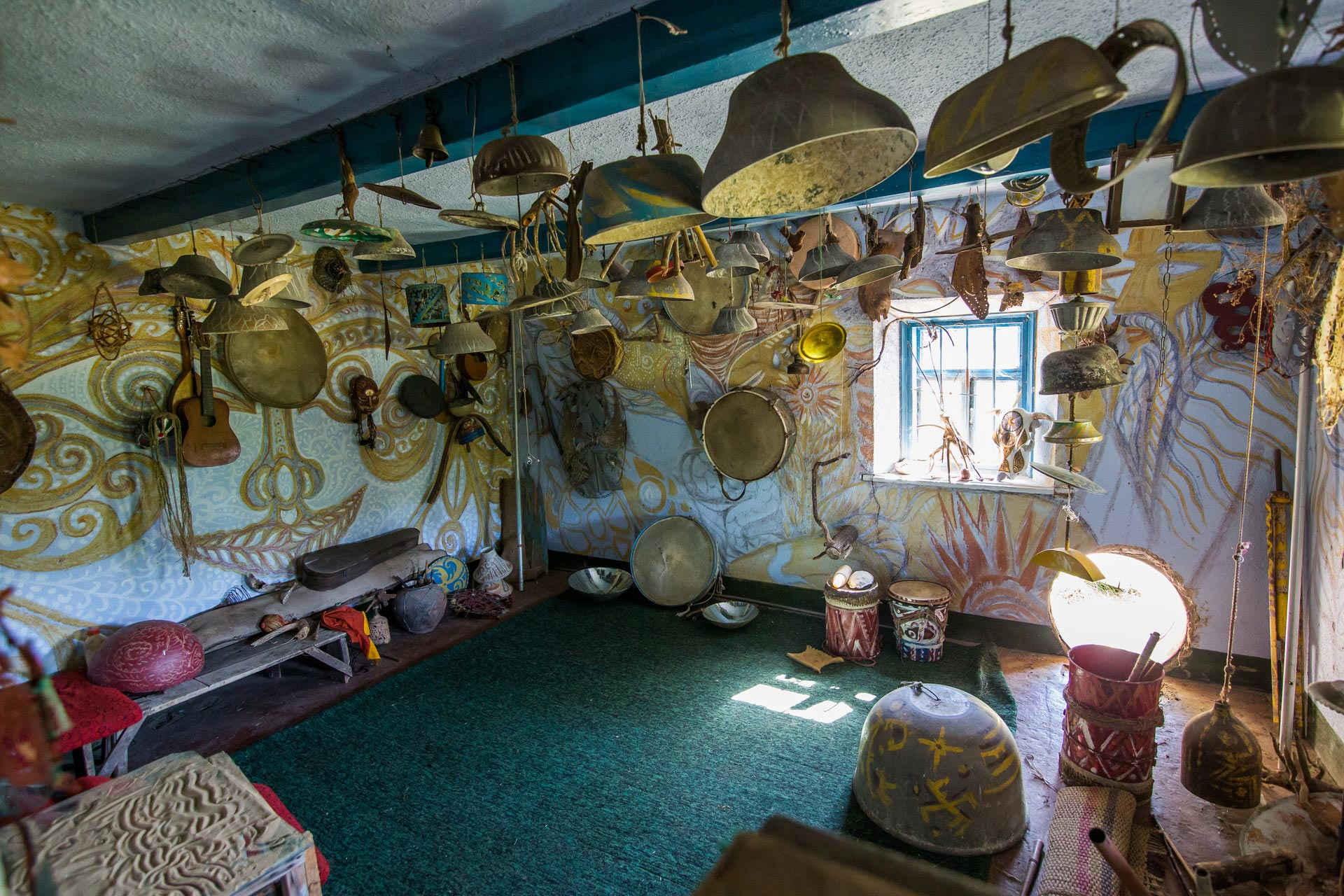
The Alyoshkins` philosophy
On the Alyoshkins` creations are a lot of pagan and Old Slavic signs. They follow the cult of natural forces and the nature, but at the same time you can see the icons in some museums. Oleksii doesn`t consider anything strange in it and says that different religions — are only different views on God. The man compares the knowledge about religion with the language knowledge and says, that common philosophy plays important role here.
The main religion for Alyoshkins is love and everyone who comes to visit them feels that. And changes can also be born only out of love, you have to start from yourself:
— Take care of yourself, how you have grown spiritually, what`s happened with you. Then there will not be a war. Wars with parents, wars with men, women, in general in society, all the time there are wars in the world. If you do not have a reference to love, it will not respond. As that moon, when we began to play, the moon went to the forest. Reference. And then there will be changes.
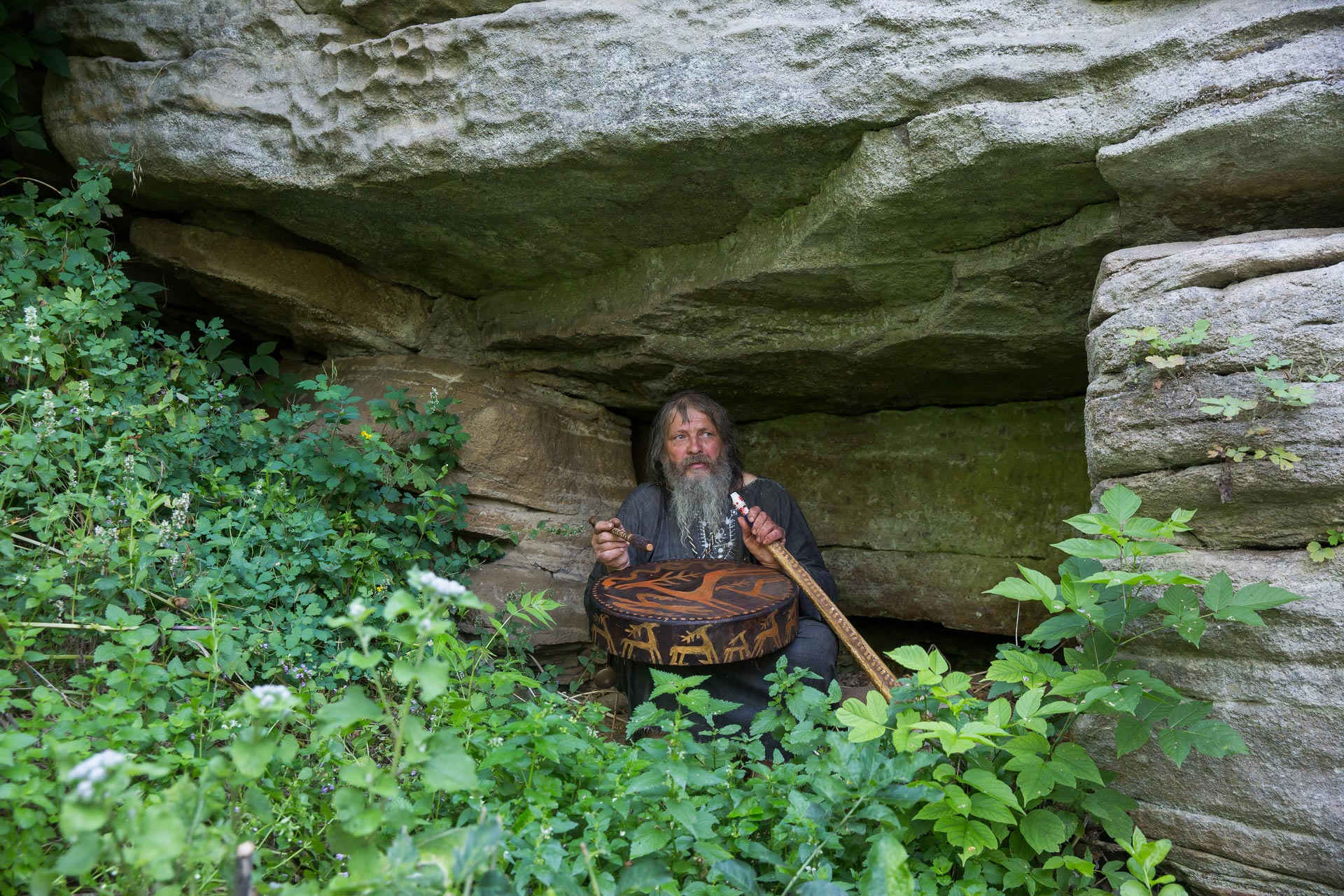
The main thing, according to Oleksii, is the feeling of happiness that they have found, had settled closer to nature. He says that recently his second cousin came to them and almost every day, seeing the conditions in which the family lives, she asked if he is happy here. Alyoshkin smiles and seems to be really happy here, because he found his place:
— A man has to find his place, his way, woman, children, well, his own fate. If we started Bush (Alyoshkins spouse initialize a stonecutter plein air painting “Podilskii Oberig” in the Bush village on Podillia, which later became an annual celebration – ed.) and we see that it went down a completely different way, do you get it? There already began business, money, all-all-all of this. And that’s absolutely another direction, it’s not what we are. If we start something, child need to be protected, the woman need to be protected, you need to be spiritually protected and protect yourself. But we start something, it is picked up, it only moves without us, well, as the car is riding. But it’s not what we wanted, what we were thinking about — it’s dying.
In order to feel happy you need a little — just desire to be happy.
— If you don’t want to be happy, you will never be happy. If you don’t want to study, you won’t study. If you don’t want to get married, you won’t get married. It`s necessary to have a desire for being happy.
Creativity for Oleksii — is a constant movement, he believes that the artist should live in the moment and continuously search:
— A doctor talks about the medicine problems, a policeman — about the police problems, and the artist talks about his problems, how to stay a creator, but not to accumulate and become just an ordinary master.
Alyoshkin interprets the process of creativity in his own way. He says that an artist – is the one who reaps evil, and he reaps it with love:
— You need love to create something. He destroys the evil, that is around him, with this love. He begins to create love.
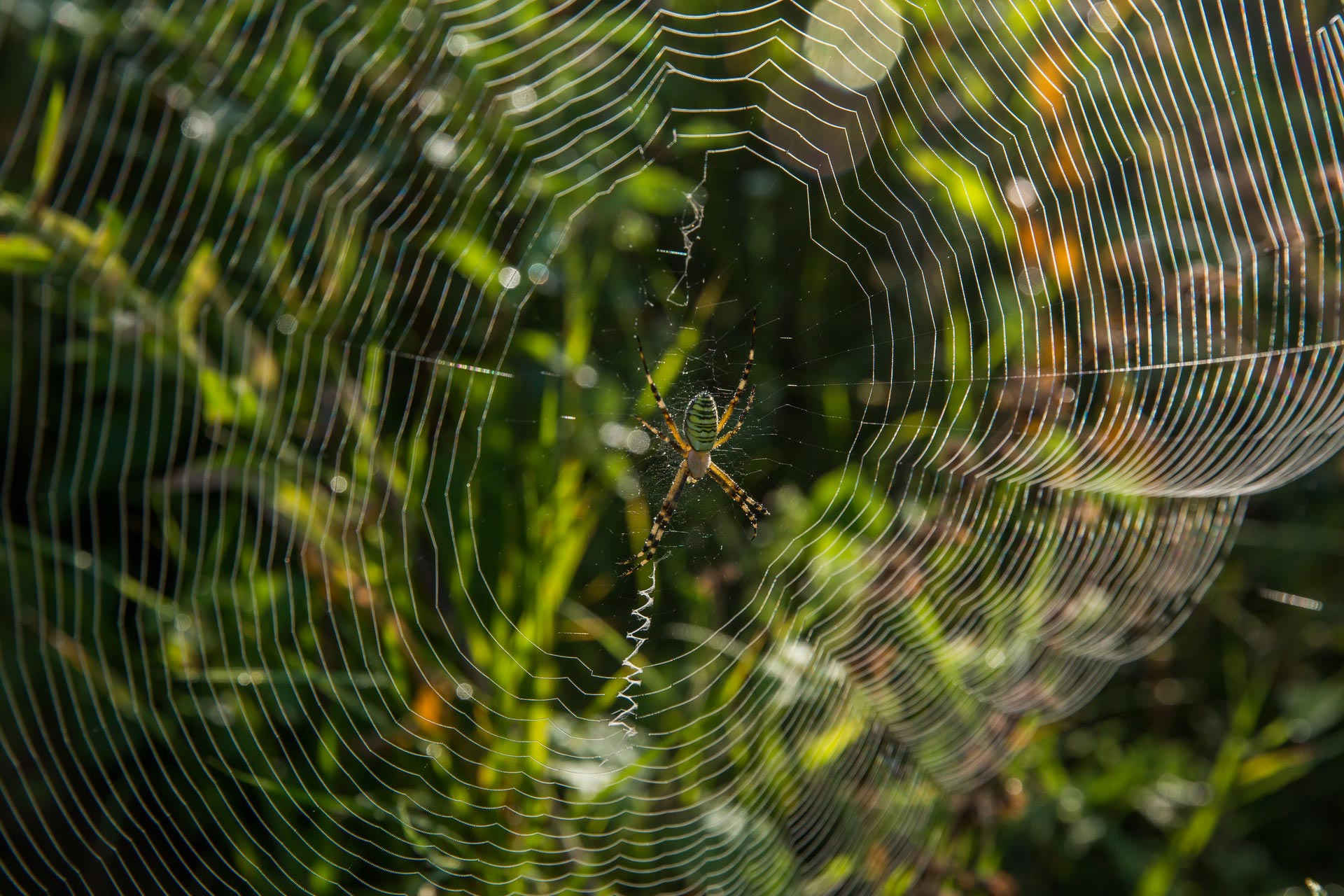
Oleksii says that feelings of love can not be bought and it should be comprehensive, both to nature, to the world and to people:
— People do not understand that we are all a single whole: water, air. You can not to poison the water and live apart here, well, this is really impossible. So if you did something — it will just boomerang back. If not for you, but for someone else. I`m Oleksii and he is Ivan. But we don’t feel wholeness that we’re all together. Me, Ivan, Petro, the nature, those, a tree, water, we all are one huge whole, but not separately. Because we have everything conditionally arranged like this, we separately pull out a table, a chair, and that`s it. Me, separately water, quart — separately. But it can not exist apart. It exists holistically — quart is on the table, poured with water, etc.
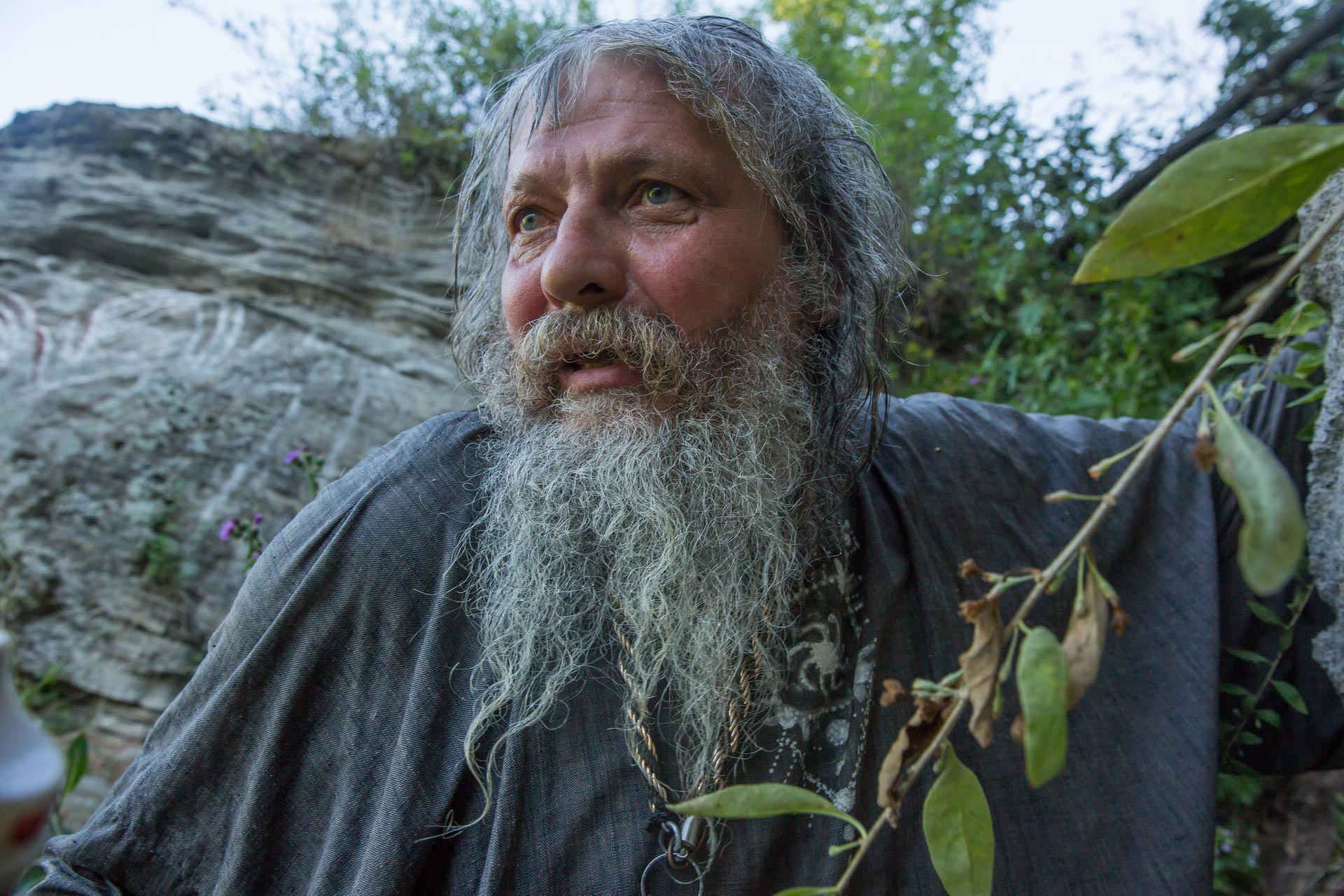
In Alyoshkin`s opinion, all problems come from the head and philosophy. He thinks that society will change only when people change their philosophy, when they change themselves.
— There will not be those forests ruined in search of amber, broken people`s destinies. Because it’s all the same. The fate of the human is just as amber. So we see that it`s unknown when the forest will recover. But for what, for what? People had lived there for thousands years and, at best, they burned the brick-kiln with that amber. And there wasn`t this pursuit.
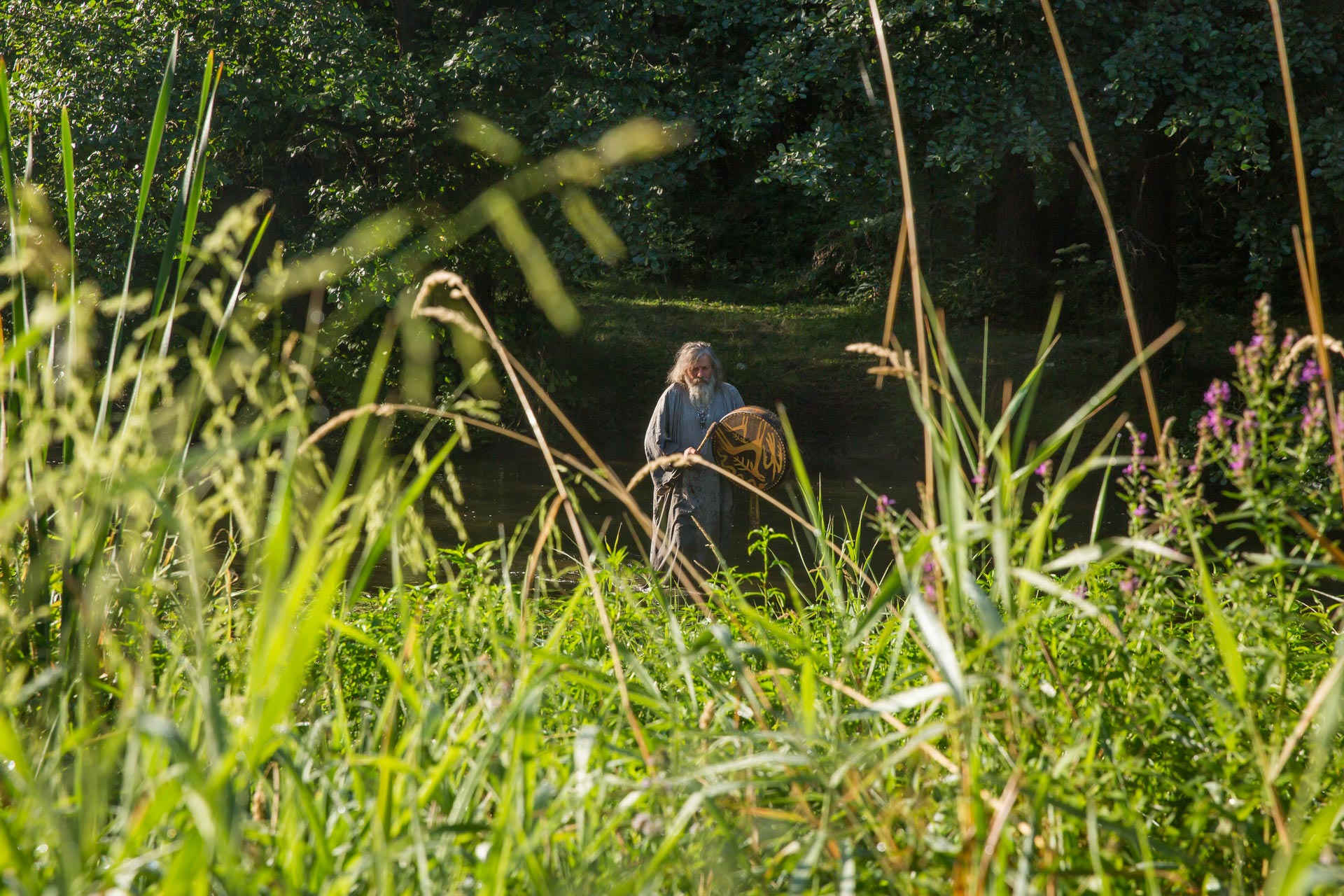
Alyoshkins marginally interfere with nature. It is important for them to preserve the village in that ancient state and with the atmosphere that predominated before and to fill it with modern art
Ukraine is rich in nature. If we lose this connection, we will lose our soul. And it`s clear — they cut the trees and the soul goes out. Firstly, plant something, grow it, and then you will honor it.
Some people still believe that the Alyoshkins are hermits but it is not true. They willingly host people who feel this connection with nature and appreciate real art. The Alyoshkins do not attend any symposia or exhibitions, because their houses are finished projects filled with warmth and faith in people. Every summer the spouse welcome children with pleasure, swims in Murafa and learns to find and see art “under foot”.

